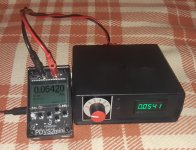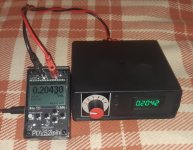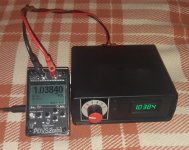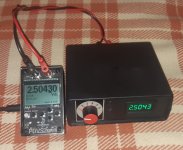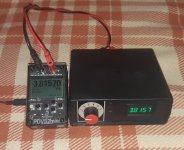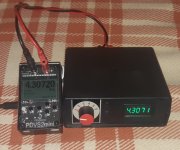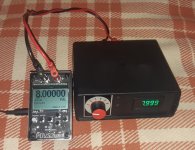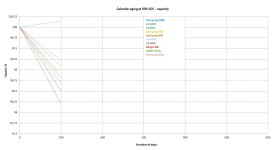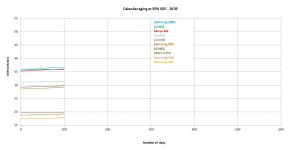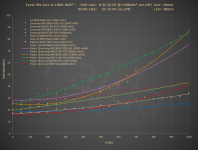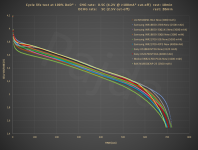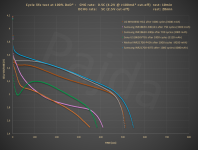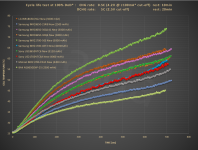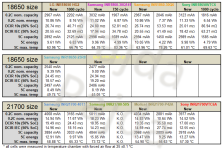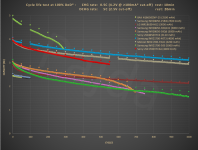Migrated to a new thread https://endless-sphere.com/forums/viewtopic.php?f=14&t=114473
Test eqiupment:
- 2pcs ZKETECH EBC-A40L
- 2pcs BF-2A four-wire cell fixture (30A version with "huge" golt plated contacts)
- tested in room with relatively stable temperature 23 ±2 °C
Remarks and comments:
- someone considers these testers a child's toy and so I am able present results on my own decision

- the most problematic is tester accuracy. It is 0.2 % ±0.01 A. The stability is relatively good.
- do not much look at the absolute values, particularly at low currents in nominal capacity tests, trends are here important results.
- will try to add more data as it will come (ca one week for 50 cycles) and finally add energy and 10s DCIR graphs as well
- each 50th cycle is inserted datasheet nominal capacity test with 10s DCIR test (see dots in figure)
- 100 % DoD should be with asterix because:
a) HG2 and VTC6 datasheets recommends to go down to 2V when cycled at 5C.
b) minimal charging CV phase cut-off current is set to 100 mA due to the EBC-A40L limitation (HG2 should go to 50 mA cut-off)
* There was ca 4 weeks pause in testing after 200 cycles 30Q and after 150 cycles VTC6
** Changed VTC6 tester from A40L to A20 model after 720 cycles
*** Missed data for 50S, 40T3 and P42A caused by the harddrive failure
____
added "Table" with values measured on precision battery tester (not ZKETECH). Those test were performed in temperature chamber under 25°C, TC is using forced air flow to maintan consistent temp. This 25°C air flow acts as cooling force on the cell surface, so the measured temperatures under high load will be affected by this.
added Samsung 30Q6 to the chart (A20 tester)
added Molicel P42 to the chart (A20 tester)
added Samsung 50S to the chart (A40L tester)
added Samsung 40T3 to the chart (A20 tester)
added Sony 21700VTC6A to the chart (A20 tester)
added Samsung 25R8 to the chart (A20 tester)
Migrated to a new thread https://endless-sphere.com/forums/viewtopic.php?f=14&t=114473


